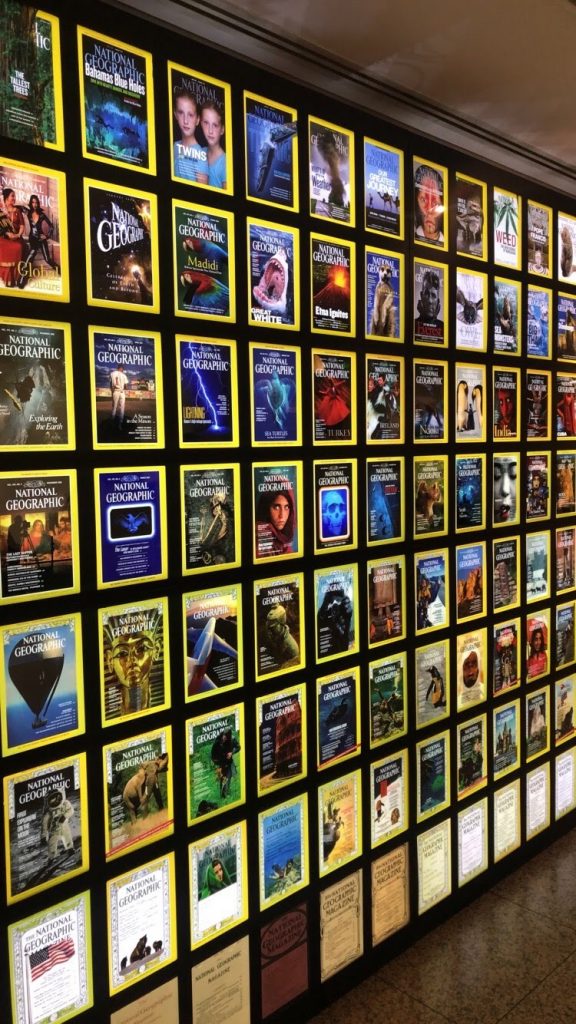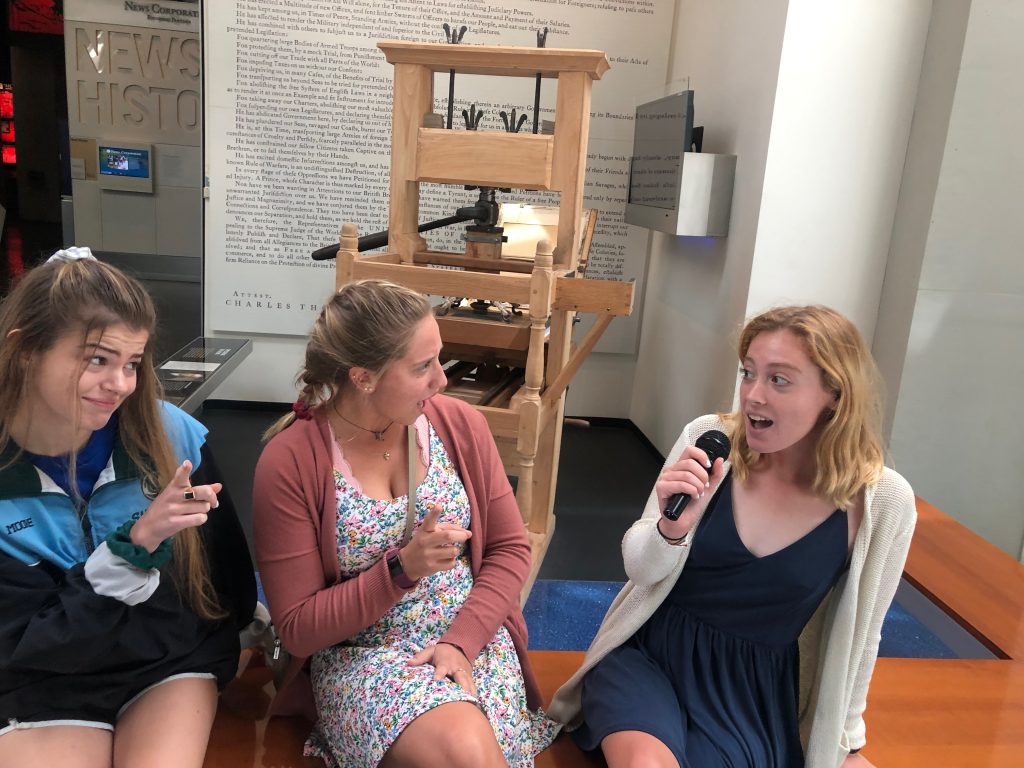Journalism Today: Sturdy Advice for an Ever-Changing Field
By Olivia Chatowsky and Jourdynn Cooper
On Wednesday, September 4th, journalism experts explained how the face of journalism is changing and how to deal with it, to a group of Gettysburg College students at National Geographic Headquarters and the Newseum.

Photo by Olivia Chatowsky
On Wednesday, September 4th, a group of eager Gettysburg College students entered the big city excited to miss class as well as explore the opportunities of the day ahead, catching a glimpse into a possible future career. The students met up with Brian Howard, a writer, editor, and producer for National Geographic, where he has worked for the past eight years. Howard shared his personal journey to where he is today, what it is like to work as a journalist for NatGeo and how it is an ever-changing field.
Howard advised the students to be adaptable and flexible. In a field where you can be a reporter one day and a writer the next, you must be ready for the challenge. Not only is NatGeo looking for journalists, they are looking for storytellers, personalities, and science; a jack of all trades looking to produce accurate, meaningful stories.
Backpack journalism is the norm today in which it is necessary to have experience in any and all forms of journalism. Brian Howard explains that starting out small scale is, in fact, advantageous in regard to exposure to different skills, since “most early career folks start somewhere small with the advantage of hands on experience.” This allows those pursuing journalism to learn video editing and other new technology firsthand.
One of Brian Howard’s key points of advice was to “produce exceptional work everywhere”. If someone wants to rise to the top and work for NatGeo, or reach any sort of distinction, they must begin by producing high-quality work, even if it is in a small newsroom. Getting your work out there is essential regardless if it’s for the school newspaper or self-published on a blog, emphasizing that “you’re only as good as your portfolio”. Practice makes perfect, and the story itself is not as important as the quality of writing–a talented writer can create an interesting and engaging piece even from their own backyard.
It’s about telling the story. This is especially important for National Geographic journalists since as Howard puts it, “the environment is a critical part of our world, it makes up the life system”. Helping people relate to our planet on a global scale helps to better understand how to protect it, which is a noble task indeed.
While the goal at National Geographic is narrowing in on global stories, Howard warns that this is no easy task, since the topic of the environment is more political in the U.S. while this is not the case in other countries. Nonetheless, “National Geographic has a global focus, which is rare in today’s media” according to Howard, especially since authors bring their own bias and baggage due to the prominent white colonial history in America. Bias, Howard warns, is tricky to avoid, but a necessary step in producing accurate stories.
A similar idea was reiterated in a previous meeting with Sara Bhatia, a volunteer educator at the Newseum in Washington DC, who is well-versed in fake news and bias.
Bhatia defined fake news as misinformation and disinformation which is meant to accidentally (or purposefully in the case of mal-information) deceive people. It is news that is chock full of lies, bias, and untrue statements.

Photo by Olivia Chatowsky and Jourdynn Cooper
People use fake news for many different reasons such as want of profit, or just entertainment. With the possibility that everything read being untrue in some form, it can be overwhelming, especially for a young backpack journalist who strives for speed as well as accuracy in their reports. Luckily, there are tools today, for journalists and media consumers alike to sort fake news with facts. First, there are many fact checking websites that have already done the work. Sara Bhatia introduced the fact-checking method, ESCAPE: Evidence, Source, Context, Audience, Purpose, and Execution. Each letter stands for a different tactic to determine if the news is true.
Social media, a main culprit in spreading mal-information and disinformation, is also a great source for journalists to get their pieces out into the world and have a positive impact. News stories today can be easily searched on the internet, allowing for many to pop-up at once, including those with valuable information from accurate, professional journalism. Brian Howard provides an example of a reader remembering information from his article that later saved their life. While on vacation, this reader had noticed that the water was quickly receding, an indication that a tsunami is about to hit. They had read Howard’s informative article on tsunamis, and it luckily resonated long enough to save their life. The implications of one’s writing may not be clear at the beginning, but even impacting just one person is rewarding enough.
While is seems that there are many things to remember when entering the field of journalism, it really comes down to staying alert and aware in today’s heated political climate, and following a passion for writing. Focusing on telling the story in front of you in a compelling and truthful manner is what students can take away for successful journalism in a fast-paced world. As much as journalism has changed even within the last 10 years, a desire to produce genuine, thorough and meaningful work will make for a good journalist.
This story was updated on October 1, 2019. The primary changes include shortening for concision including the deletion of paragraphs and sentence edits.